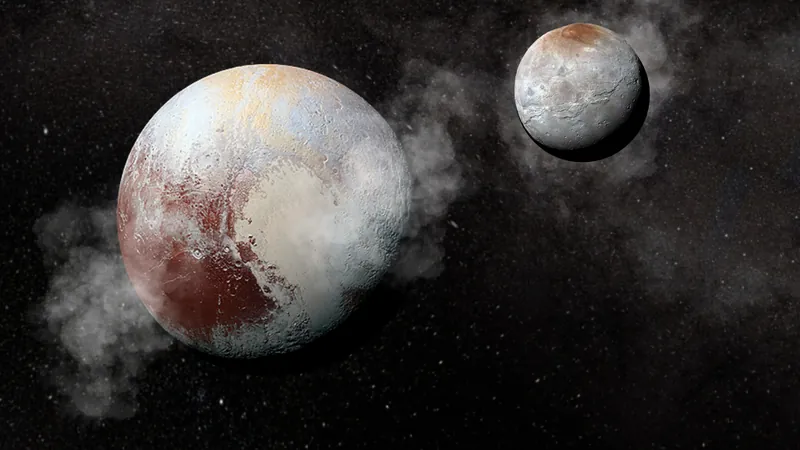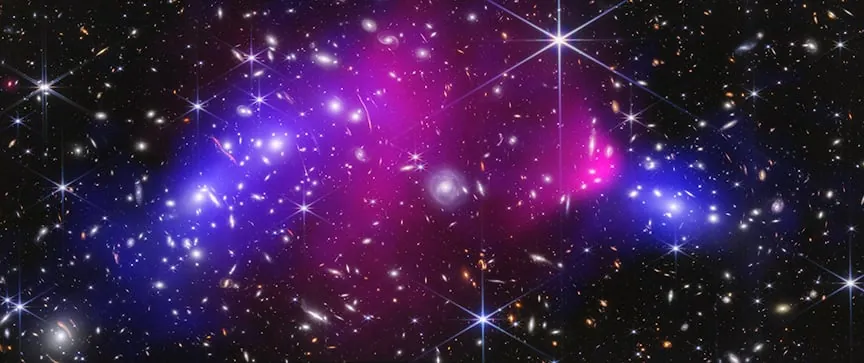
Chilling Revelations: How Pluto's Hazy Skies Are Freezing Its Atmosphere
2025-06-12
Author: Wei Ling
Pluto's Surprising Atmosphere: A Discovery by James Webb Space Telescope
The James Webb Space Telescope (JWST) has unveiled a striking phenomenon: the hazy skies over icy Pluto are playing a dual role by cooling its atmosphere while propelling methane and organic molecules from its surface into space—some of which are swept up by its companion moon, Charon.
The Mystery of Pluto's Atmospheric Escape
This intriguing haze was first theorized in 2017 by planetary scientist Xi Zhang from the University of California, Santa Cruz, as a solution to the mystery of Pluto's leaky atmosphere. NASA's New Horizons mission revealed that Pluto loses about 1.3 kilograms (2.9 pounds) of methane into the cosmos every second—a loss that is extraordinary for an atmosphere. Charon, Pluto's closest moon, captures about 2.5% of this escaping methane, staining its poles a striking red.
How Does Haze Cool and Heat?
Zhang predicted that the haze absorbs trace extreme ultraviolet light from the distant sun, giving atmospheric molecules a nudge to escape into the great void. This same haze might also cool the atmosphere, creating a perplexing balance between heating and cooling. The JWST recently confirmed these haze emissions at mid-infrared wavelengths, a task previous telescopes with less resolution could not achieve.
Temperature Extremes on Pluto
Pluto's atmosphere is predominantly nitrogen, with a touch of carbon dioxide and various hydrocarbons like methane. Despite this thin veil—only 13 microbars of pressure compared to Earth's 1 bar—its upper atmosphere can extend far beyond the surface, owing to Pluto's low gravity. This means that the tiniest nudge from solar energy can send molecules spiraling away.
The Power of Haze in Climate Regulation
The haze's ability to cause both heating and cooling, depending on its physical properties, is crucial for regulating the energy balance within Pluto's atmosphere. This balance impacts global temperatures and what can be described as the climate of this frigid body, dominated by cyclical processes of sublimation and freezing of key gases, often originating from the vast glacier in Sputnik Planitia.
Seasons on Pluto: A Unique Climate Experience
Zhang explained that the intensity of gas heating surpasses cooling from the haze, leading to a generally warmer atmosphere. However, the haze's cooling effect might vary with the seasons—an intriguing aspect considering Pluto's dramatic orbital path takes it from near Neptune to almost twice as far from the sun.
A Window into Earth’s Past?
Interestingly, Pluto's hazy atmosphere resembles the hydrocarbon-rich haze on Saturn's moon Titan, birthed from similar chemical reactions. This similarity offers tantalizing insights that may even reflect aspects of Earth's ancient atmosphere before the rise of oxygen-rich conditions over 2.4 billion years ago. Understanding Pluto's unique climate might just provide clues about our planet's formative years.




 Brasil (PT)
Brasil (PT)
 Canada (EN)
Canada (EN)
 Chile (ES)
Chile (ES)
 Česko (CS)
Česko (CS)
 대한민국 (KO)
대한민국 (KO)
 España (ES)
España (ES)
 France (FR)
France (FR)
 Hong Kong (EN)
Hong Kong (EN)
 Italia (IT)
Italia (IT)
 日本 (JA)
日本 (JA)
 Magyarország (HU)
Magyarország (HU)
 Norge (NO)
Norge (NO)
 Polska (PL)
Polska (PL)
 Schweiz (DE)
Schweiz (DE)
 Singapore (EN)
Singapore (EN)
 Sverige (SV)
Sverige (SV)
 Suomi (FI)
Suomi (FI)
 Türkiye (TR)
Türkiye (TR)
 الإمارات العربية المتحدة (AR)
الإمارات العربية المتحدة (AR)